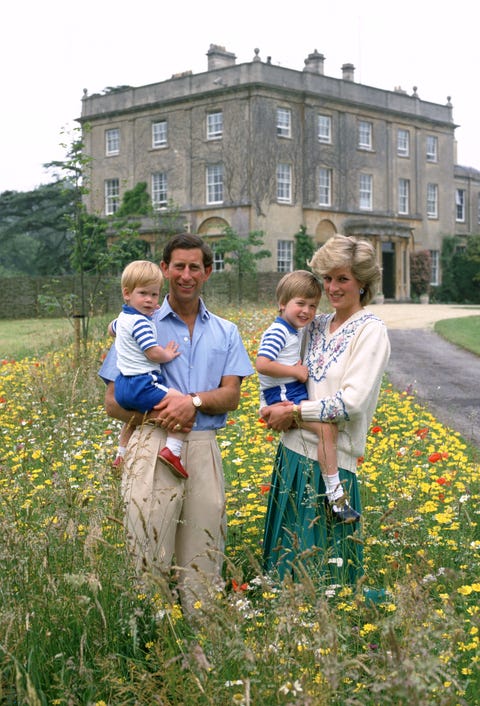In episode 4 of The Crown season 4, the queen pays a visit to her eldest son in the Gloucestershire countryside, where he’s renovating his newly purchased home. As Charles walks her around the grounds, he talks her through his plans for the sprawling estate, which he’s gradually transforming from a neglected pile into an “unconventional” royal retreat. Here’s a primer on the real Highgrove.
Highgrove was a real fixer-upper when Charles bought it.
Charles first purchased the property in 1980, seeing potential in the neglected Gloucestershire estate which many might have missed. In The Crown, he describes it to the queen as a blank slate, and that’s very close to the way he saw it in real life. “The house itself had nothing round it at all,’ he told The Telegraph last year. “There were no hedges; large open areas came right up to the house, with just a brown path that went round it. So we had to create ‘rooms.'”
Charles is well known as an environmentalist, and was passionate about organic gardening and sustainable agriculture before those things were part of a mainstream conversation. That was a guiding principle as he developed his vision for the property. Highgrove’s grounds are ethically and sustainably run, powered by renewable energy and solar panels and heated by wood pellet-fired boilers.
“When the Prince first arrived, Highgrove possessed little more than a neglected kitchen garden, an overgrown copse, some pastureland and a few hollow oaks,” Highgrove’s website explains. “Today, after the hard work of scores of people, the garden unfolds in a series of highly personal and inspiring tableaux, each one reflecting the Prince’s interests and enthusiasms.”
The gardens at Highgrove have always been close to Charles’s heart.
During their walking tour, Charles enthusiastically tells his mother all about his plans for the house’s gardens—a wild garden here, a kitchen garden there, a sundial garden over there. “Everything will be organically, no pesticides, and no straight lines,” he says. “Nothing too neat or uniform.” There will be “a certain wild unconventionality” about the garden.
This is a pretty perfect description of how Highgrove House ended up in real life. As Alex Preston described it in The Telegraph last year, “the gardens of country houses can feel formulaic, designed by committee, and yet Highgrove is something else.” As designed by Charles, the grounds of the house are “a place that is both a work of exquisite, often eccentric art, and an advertisement for a way of thinking about our own relationship to the land we walk upon and cultivate. It’s also a garden that feels deeply personal, with every border, vegetable patch, topiarised hedge and ornamental flourish bearing the mark of its creator.”
This content is imported from Twitter. You may be able to find the same content in another format, or you may be able to find more information, at their web site.
The house played a major role in Charles and Diana’s courtship.
“During that first weekend Prince Charles showed Diana around Highgrove, the 353-acre Gloucestershire home he had bought in July—the same month he had started to woo her,” Diana’s biographer, Andrew Morton, wrote in Diana: Her True Story—In Her Own Words. “As he took her on a guided tour of the eight-bedroom mansion, the Prince asked her to organize the interior decoration. He liked her taste though she felt that it was a ‘most improper’ suggestion as they were not even engaged.”
Although Charles’s official residence has always been Clarence House in London, he spends a lot of his time at Highgrove. He and Diana moved into the house after their wedding in 1981, and per the BBC, Princes William and Harry lived at Highgrove in their early years before beginning school in London. Today, Highgrove is described as “the family home” Charles shares with Camilla Parker-Bowles.
This content is created and maintained by a third party, and imported onto this page to help users provide their email addresses. You may be able to find more information about this and similar content at piano.io


